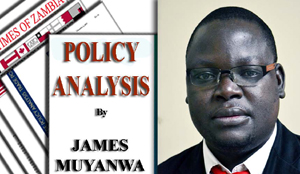 THE idea of the Farmers Input Support Programme (FISP) is one of the surest ways of helping to fight poverty among the rural populace.
THE idea of the Farmers Input Support Programme (FISP) is one of the surest ways of helping to fight poverty among the rural populace.
Currently, more than 900,000 small-scale farmers are accessing Government support through FISP in all parts of the country.
In essence, it is these 900,000 small-scale farmers and several others who do not receive the Government-sponsored FISP who could be accredited with the various bumper harvests the country has been recording.
They cater for the national strategic reserves of the national staple crop, maize, currently stocked by the Food Reserve Agency (FRA) in the country for national food security.
Commendable as they are, these bumper harvests, including the more than three million tonnes of maize recorded last season are attained at great cost.
This is mainly due to the low productivity among this category of farmers.
Sadly, this has a direct effect on the market for the crops especially maize as well as on the growth of the involved farmers.
I feel that one of the reasons for this scenario is the blanket promotion of the cultivation of maize regardless of the soil type and climatic condition of an area.
As I observed recently the Patriotic Front (PF) while in the opposition rightly observed this and its current manifesto prescribes the demarcation of the country into agriculture zone as the remedy.
The zoning is supposed to take into account the comparative advantage of an area in growing a given crop.
If that measure had been introduced upon the PF’s ascendance to power, it could have led to a situation where instead of all receiving Government support in the cultivation of maize, some regions could have been assisted in the growth of other crops or livestock.
For instance the farmers in Eastern Province could have been receiving support in the cultivation of the groundnuts and cotton among other suitable crops.
In terms of Government support, the promotion for the cultivation of maize could have been left to those areas, like most districts of Central Province, whose soils and climatic conditions seem to favour the growth of the crop.
I am aware that the FISP, especially on maize, has for obvious reason attained a political dimension because of the importance of the crop as the country’s staple food.
It is, however, not too late to change the scenario if the country is to address the current low productivity of the maize.
The low productivity entails that the small scale farmers have to spent more resources and energies in posting disproportionately low outputs.
This is compounded by poor farming practices by the small scale farmers.
Often, the small scale farmers do not adhere to the rules in terms of when and how to apply the fertilisers and how much input should be applied for a given area of land.
One of the main poor practices is the sparingly application of the fertilisers so that the input could cater for proportionately larger areas thereby rendering the inputs ineffective.
In some instances an input pack meant for one farmer for a given piece of land is shared between two or more farmers in the name of being cost-effective.
I have, for instance, witnessed a situation where a farmer after getting the treated maize seed, decides to mix it with untreated grains from his/her previous harvest.
All these conducts arise from lack of appreciation for the stipulated rules for input applications and other best farming practices.
In the end what the farmers get from their given fields are much less than they would get if they were engaged in good farming practices.
With the same packs of fertilisers and for even smaller pieces of land, the commercial farmers record much higher yields just by working smartly.
In so doing the commercial farmers are able to record annual growths in the farming while the small scale farmers remain stunted.
The direct upshot of the situation to the FISP is that the original intention of helping the small scale farmers to grow into medium or emergent farmers and ultimately into big scale farmers is not realised.
The Government’s original intention was that after receiving FISP for a given number of farming seasons, the beneficiaries were supposed to graduate and start buying their own inputs.
This could have led to a situation where each year more new beneficiaries are added to the list while the growth of the sector would have been guaranteed.
Comparatively and as the result of the current low productivity, the FRA buys the maize at a high price rendering the mealie meal and other maize products so pricey.
This also explains why the export market for the Zambian maize is not booming. To make economic sense Zambia’s maize should be exported at high prices, which are not competitive.
As a way forward, therefore, having got it right on high production, it is now imperative to address productivity by firstly revisiting the issue of agriculture zones and secondly by boosting the provision of the extension services to the small-scale farmers.
For comments call: 0977 246099, 0955 431442 or e-mail: jmuyanwa@gmail.com






